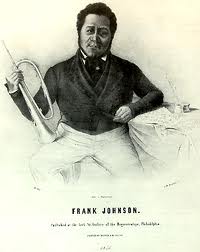Annotation:Juliana
X:1 T:Juliana M:6/8 L:1/8 B:Edward Riley – “Riley’s Flute Melodies vol. 1” (New York, 1814, No. 230, p. 62) B: https://archive.org/details/flutemelodies0000rile/page/n77/mode/2up Z:AK/Fiddler’s Companion K:D F/G/|ABA d2f|fec dfg|a2 b agf|gfg e2A| ABA d2f|gec dfa|gd'b afd|gec d2:| |:c/d/|ea bag|fag fed|eaa a^ga|faf dfa| bgd' d'bg|afd' d'af|bge afd|cde ABc:| |:{de}f2e {ef}g2f|fed B2d|A2d e2f|agf efg| {de}f2e {ef}g2f|fed B2d|A2f e2f|e3 d2:|
JULIANA. English, Jig. G Major (Miller): C Major (Barnes): A Major (Kennedy). Standard tuning (fiddle). AAB (Kennedy, Miller): AABBCC (Barnes). The melody appears in dancing master Thomas Wilson's Companion to the Ball Room (London, 1816). A version of the tune also appears in Edward Riley's Flute Melodies (New York, 1814, p. 62) and in the music manuscript collection of Frank Johnson, inscribed "Presented to Mrs. A. Rush by Frank Johnson, a Black Musician" (Historical Society of Pennsylvania, Philadelphia). Francis A. Johnson [1] (1792-1844) was an African-American musician, principally a coronet player, who rose from humble beginnings to become one of Philadelphia's premier bandleaders in the early 19th century. In England, the jig was entered into the large 1840 music manuscript collection of multi-instrumentalist John Rook (Waverton, near Wigton, Cumbria).


